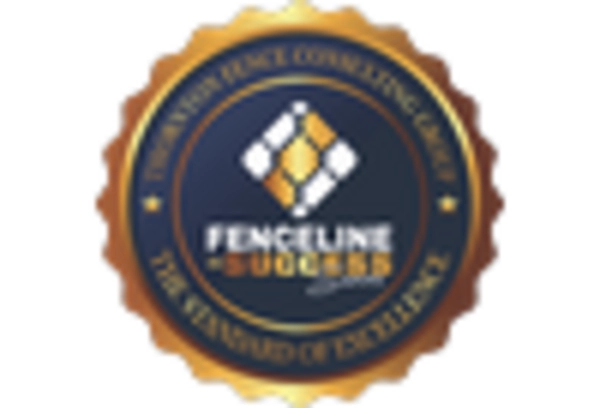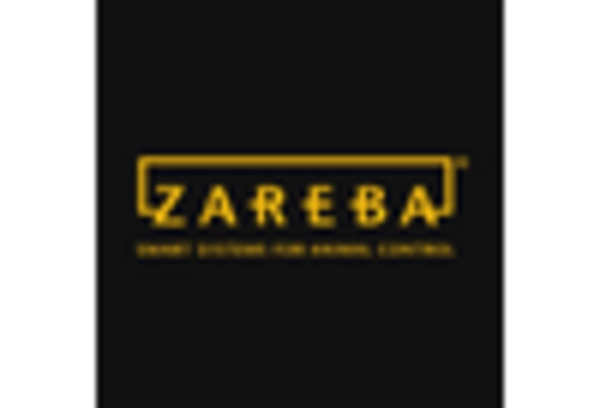Rising Security Concerns
The Electric Fence Market is experiencing a notable surge in demand due to escalating security concerns across various sectors. Individuals and businesses are increasingly investing in electric fencing solutions to protect their properties from theft and vandalism. According to recent data, the security sector has seen a growth rate of approximately 8% annually, which directly influences the electric fence market. This trend is particularly evident in residential areas, where homeowners seek effective deterrents against intruders. Furthermore, commercial establishments are adopting electric fencing as a part of their comprehensive security systems, thereby driving the market forward. The heightened awareness regarding personal safety and property protection is likely to sustain this growth trajectory in the Electric Fence Market.
Agricultural Applications
The Electric Fence Market is significantly influenced by its applications in agriculture. Farmers are increasingly utilizing electric fencing to protect crops and livestock from predators and to manage grazing patterns effectively. This method is not only cost-effective but also environmentally friendly, aligning with the growing emphasis on sustainable farming practices. Recent statistics reveal that the agricultural sector accounts for nearly 30% of the electric fence market share, highlighting its importance. As the demand for organic and sustainable farming continues to rise, the adoption of electric fencing solutions is expected to increase. This trend indicates a promising future for the Electric Fence Market, as more farmers recognize the benefits of integrating electric fencing into their operations.
Technological Advancements
Technological advancements play a pivotal role in shaping the Electric Fence Market. Innovations in electric fencing technology, such as smart fencing solutions and remote monitoring systems, are enhancing the functionality and appeal of these products. The integration of IoT devices allows users to monitor their electric fences in real-time, providing an added layer of security. Market data indicates that the adoption of smart technologies in security systems is projected to grow by 15% over the next five years. This trend not only improves user experience but also increases the effectiveness of electric fences in deterring unauthorized access. As technology continues to evolve, the Electric Fence Market is likely to benefit from these advancements, attracting a broader customer base.
Regulatory Support and Standards
Regulatory support and the establishment of standards are crucial factors influencing the Electric Fence Market. Governments are increasingly recognizing the importance of security measures, leading to the formulation of regulations that promote the safe use of electric fencing. Compliance with these regulations not only ensures consumer safety but also enhances the credibility of electric fence products. Recent initiatives have been introduced to standardize electric fencing systems, which could potentially boost market growth. As manufacturers align their products with these standards, consumer confidence is likely to increase, further driving demand. The Electric Fence Market stands to benefit from this regulatory environment, as it fosters innovation and encourages the adoption of electric fencing solutions.
Urbanization and Infrastructure Development
Urbanization and infrastructure development are key drivers of the Electric Fence Market. As urban areas expand, the need for effective security solutions becomes paramount. Electric fencing is increasingly being adopted in urban settings to safeguard residential and commercial properties. The construction of new buildings and the development of industrial zones create opportunities for electric fence installations. Market analysis suggests that urban areas are projected to witness a 10% increase in electric fence installations over the next few years. This growth is fueled by the rising population density and the corresponding need for enhanced security measures. Consequently, the Electric Fence Market is likely to thrive as urbanization continues to reshape the landscape.


















Leave a Comment